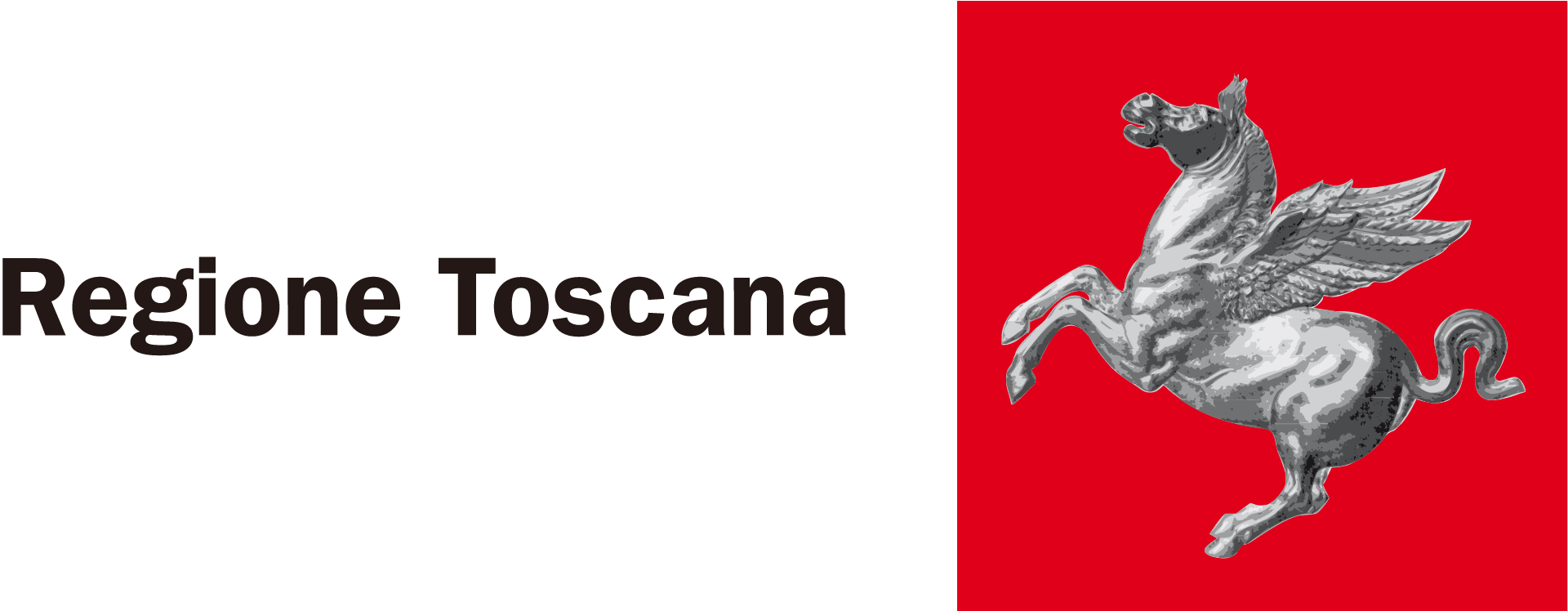Territory
Different Landscapes
Of the regions in Italy, Tuscany is characterised more than others by a good balance between town and country. The varied nature of the territory gives numerous advantages, such as being able to offer different tourist products, diversify production activities, reduce the risks of economic shocks, and respond to the impact of production activities on the environment using different tools.
Tuscany is the region with the largest amount of woodland: 13% of Italy’s woods are in our region, followed by Piemonte with 9.8%. Of more than one million hectares of woodland, approximately 18% is in the province of Grosseto, followed by Florence (17%) and Arezzo (16%). In addition to the dimensions of the woodland, Tuscany’s wood are also important due to the quality and variety of the trees, ranging from Mediterranean shrubs to expanses of central European firs.

Source ISTAT: Percentage of the land used per province
Protecting the Environment
Tuscany has centred a large part of its tourism activities on the quality of the environment and the structure of the territory. As well as guaranteeing sustainable development, this resource also permits economic return and the redistribution of income over the territory, increasing income where there is less industrial activity and services to companies. This is why over recent years the local autonomous institutions, starting with the regional authority, have increased the amount of protected areas, adding additional regional, provincial and local parks to the national and state reserves. More than 8% of the territory in Tuscany is covered by parkland; these protected areas are the entrance way to the marvels of our wine and food traditions, festivals and ancient professions.
Extension in kmq and density of the protected areas in the Tuscan provinces

The Environmental Pressure of Tourism
Tuscany’s coastline stretches for 633 km and in recent years more than 95% has become suitable for swimming. Around 39% of tourists in Tuscany come to the sea. There are some locations where the tourist business is evidently only emerging whereas the remainder of the coastline boasts areas with a lengthy tourist tradition, such as Massa, Viareggio, Pisa, Castiglione della Pescaia, Grosseto, Orbetello and Capoliveri. Then there is another much more numerous group of municipalities with large numbers of tourists, including the other municipalities in Versilia, all the coast between Livorno and Follonica and some areas of the island of Elba.
The impact of tourism on the population is a good indicator of the pressure that the coastal economic systems place on the environment: the tendency is in fact to assess the degree of problems by relating the presence of tourists to how structured and populated the territory is. Though on one hand tourism is a noteworthy source of income for the coastal municipalities and therefore a powerful engine for economic development, on the other hand it is a potential factor of all-round pressure (consumption of water and energy resources, reduction of space, increase in air pollution, etc…) and for the marine ecosystems (increase in urban waste, increase in maritime traffic). And precisely for this reason, in the areas which have or could have the biggest problems, efforts have been intensified to keep check on the hygiene, sanitary and environmental conditions of the Tuscan seas.

Air and Noise
The many human activities that take place in urban and rural areas: the noise of motor vehicles, heating systems, factory chimneys, rubbish tips and fertilisers used in agriculture emit pollutant substances into the air causing serious problems in terms of deteriorating the air quality.
The emission of pollutants into the atmosphere has reached such levels as to risk damaging the climate, ecosystems, and the health of the air we breathe and therefore the health of the people, not to speak of the damage to the cultural and historic heritage of monuments and buildings.
The amount of air pollution is not distributed equally over the territory: some municipalities and provinces are more affected than others. Both the causes of the pollution and the type of pollutants differ from area to area.

The other great environmental problem connected to the air is above all but not only noise pollution in urban areas. We cannot see the noise, we do not breathe it, it does not wear away at the monuments… but it does wear down our nerves. Today noise levels are also recognised by standards and policies as a cause of great unease for people’s lives.
In harmony with the policies and goals singled out by the European Union, the Tuscan regional authority will carry out operations to monitor the air quality and noise levels in the territory, and to apply the classifications and limits laid down. A control system has been created consisting of control units that detect how many pollutants end up in the atmosphere every day. A special law lays down that mayors must stop the traffic when the situation becomes critical.
Water
The amount of water consumed increases in proportion to the number of inhabitants and the production activity, and also due to the type of consumption. Contrarily to this evolution, water resources do not grow or may even decrease because many lose the properties needed to be used (they dry out or are polluted by substances which mean they cannot be used afterwards).
In Tuscany, in order to provide suitable management and careful control of the purification and distribution of drinking water, the regional territory has been divided into ATOs (optimal territorial environments). At present, there are 6 ATOs in line with the supply areas of the main Tuscan basins:
ATO1 “North Tuscany”
ATO2 “Lower Valdarno”
ATO3 “Mid Valdarno”
ATO4 “Upper Valdarno”
ATO5 “Tuscan Coast”
ATO6 “Ombrone”
For more information on the list of municipalities that are part of the six ATOs, refer to the following address:
Complete list of municipalities in the ATOs for water resources
Map of the ATOs for water resources (regional law 81/1995)

75% of the water used for drinking water in Tuscany comes from wells and springs, 25% from rivers and waterways and 2% from lakes and reservoirs. These percentages obviously vary depending on the ATO in question:

Before the water is used, it must be purified. In Tuscany there are more than 180 purification systems that currently meet the water requirements of around 94% of the population.
Soil Pollution and Waste Disposal.
Alongside the growth in interest and awareness of environmental problems, in Tuscany in particular the number of activities to monitor and control the production of waste has grown. In 1982 there were 220 rubbish tips in Tuscany. Now there are 31 (active), which receive more than one million tonnes of refuse per year. In addition to the rubbish tips there are thermal combustion plants which regenerate energy and plants for selecting and treating refuse after separate waste collection.
Since 1994, the production pro capita of waste in Tuscany has grown by 32%, and separate waste collection has gone up from 7% to 24% of the total amount of waste collected. Just a few years ago only 13% of the waste was collected separately, but in 2001 the 25% threshold was reached. Many people have understood that the mountains of rubbish can be an asset that helps to save on resources. With recycled paper we save trees. With the plastic from bottles we can make benches for public gardens, tables and chairs for the home. Kitchen leftovers can become excellent fertiliser, and wood chippings a source of energy. That is why it is important to separate waste: glass with glass, paper with paper, metal with metal
Consumption of Electrical Energy per Sector of Activity
The consumption of electrical energy is mainly due to industrial production activities.
If we are to consider solar energy, wind power and geothermal electricity among the renewable energy sources, the percentage of energy produced from those sources amounts to over 22% for Tuscany, an extremely high rate compared to the other regions in Italy (the average in Italy is 3%).

The reason for this high amount of alternative energy is due to geothermal power: Tuscany holds a monopoly on geothermal energy with more than 32 power stations concentrated in the territory of Siena, Pisa and Grosseto. The region’s energy programme has aimed strongly at directly using geothermal heat for urban district heating and for the needs of production activities, also in order to “attract” companies to geothermal areas to encourage socio-economic development.
Wind Power
The source of energy with the greatest potential in Tuscany is wind power. It is renewable as it does not require any fuel, and clean, as there are no emissions that are harmful for the environment or for man. The wind power generators, the large windmills that directly convert the kinetic energy of the wind into mechanical energy which in turn activates a generator to produce electrical energy have reached a good level of technical reliability. The regional programme (P.I.E.R.) foresees an increase in wind power, corresponding to a reduction of CO2 in the atmosphere of 420,000 tonnes per year, and singles out 92 possible areas for wind power in Tuscany. The most interesting sites are situated on the brows of the Apennines, on the islands and on the coast. However, there is currently only one plant in operation: the plant built by Edison on Mount Secchieta. The bureaucratic procedure in order to obtain the authorisation to install a wind farm, in particular the difficulties due to landscape restrictions, is the biggest obstacle to new plants opening up. Recently, the Energy Area of the Tuscan regional authority has had preliminary meetings with companies and private operators, participating in which were also the administrators of the territories in question, to discuss projects for wind farms with a potential of between 15 to 20 MW to be installed on some hilltops in the regional territory. In order to reach the goals of the regional programme and increase the production of wind power, 600 billion euros need to be invested.









